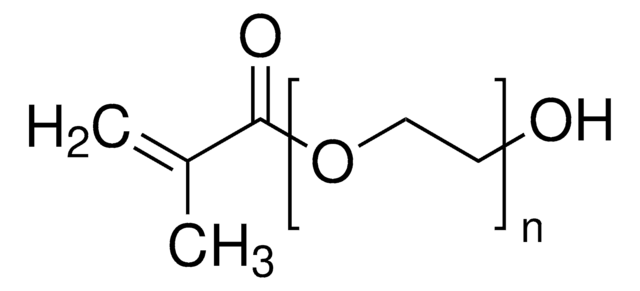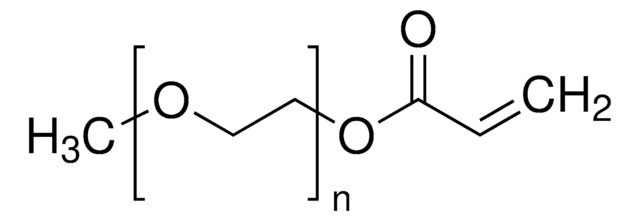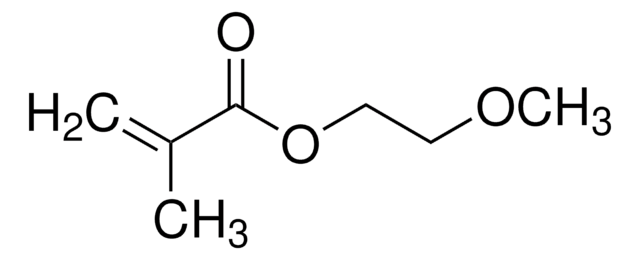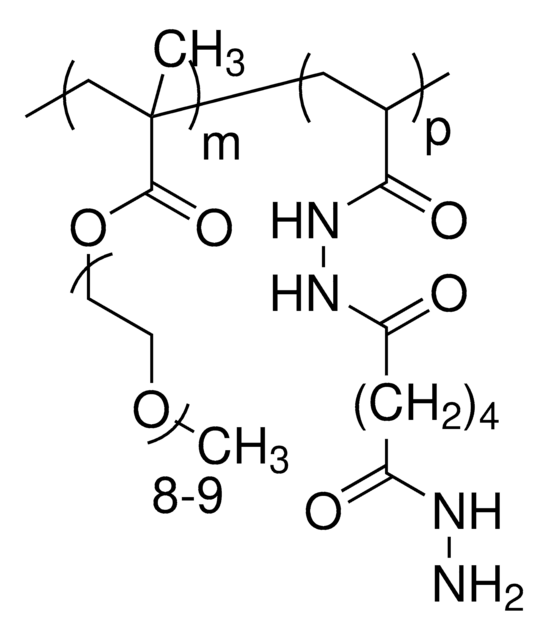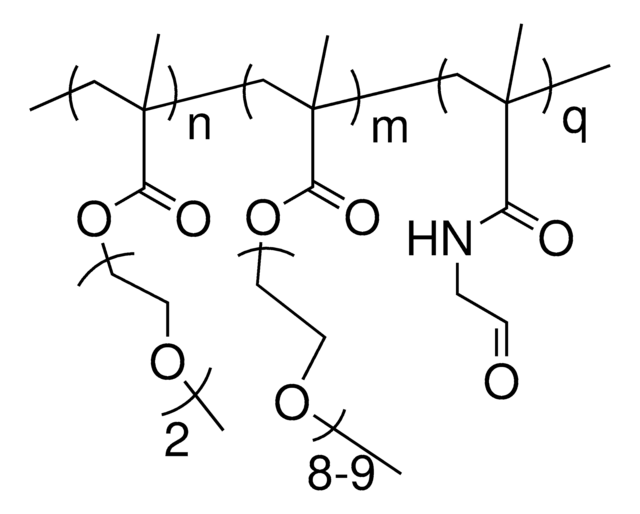447935
Poly(ethylenglycol)methylethermethacrylat
average Mn 300, methacrylate, methoxy, 300 ppm BHT as inhibitor, 100 ppm MEHQ as inhibitor
Synonym(e):
Methoxy-PEG-methacrylat, Methoxy-poly-(ethylenglykol)-monomethacrylat, Poly-(ethylenglykol)-monomethylether-monomethacrylat
About This Item
Empfohlene Produkte
product name
Poly(ethylenglycol)methylethermethacrylat, average Mn 300, contains 300 ppm BHT as inhibitor, 100 ppm MEHQ as inhibitor
Mol-Gew.
average Mn 300
Qualitätsniveau
Enthält
100 ppm MEHQ as inhibitor
300 ppm BHT as inhibitor
Eignung der Reaktion
reagent type: chemical modification reagent
reaction type: Polymerization Reactions
Brechungsindex
n20/D 1.452
Dichte
1.05 g/mL at 25 °C
Ω-Ende
methacrylate
α-Ende
methoxy
Polymerarchitektur
shape: linear
functionality: monofunctional
Lagertemp.
2-8°C
Suchen Sie nach ähnlichen Produkten? Aufrufen Leitfaden zum Produktvergleich
Allgemeine Beschreibung
Anwendung
Signalwort
Warning
H-Sätze
Gefahreneinstufungen
Eye Irrit. 2 - Skin Irrit. 2 - Skin Sens. 1 - STOT SE 3
Zielorgane
Respiratory system
Lagerklassenschlüssel
10 - Combustible liquids
WGK
WGK 1
Flammpunkt (°F)
Not applicable
Flammpunkt (°C)
Not applicable
Persönliche Schutzausrüstung
dust mask type N95 (US), Eyeshields, Faceshields, Gloves
Hier finden Sie alle aktuellen Versionen:
Besitzen Sie dieses Produkt bereits?
In der Dokumentenbibliothek finden Sie die Dokumentation zu den Produkten, die Sie kürzlich erworben haben.
Kunden haben sich ebenfalls angesehen
Artikel
The manufacture of monomers for use in ophthalmic applications is driven by the need for higher purity, improved reliability of manufacturing supply, but ultimately by the need for the increased comfort, convenience, and safety of contact lens wearers. Daily wear contact lenses have the potential to fill this need for many customers; however, their widespread use is constrained by higher costs compared to weekly- or monthly-based lenses. New approaches that improve cost structure and result in higher quality raw materials are needed to help make contact lenses more affordable and accelerate growth of the contact lens market.
Devising biomaterial scaffolds that are capable of recapitulating critical aspects of the complex extracellular nature of living tissues in a threedimensional (3D) fashion is a challenging requirement in the field of tissue engineering and regenerative medicine.
Unser Team von Wissenschaftlern verfügt über Erfahrung in allen Forschungsbereichen einschließlich Life Science, Materialwissenschaften, chemischer Synthese, Chromatographie, Analytik und vielen mehr..
Setzen Sie sich mit dem technischen Dienst in Verbindung.
